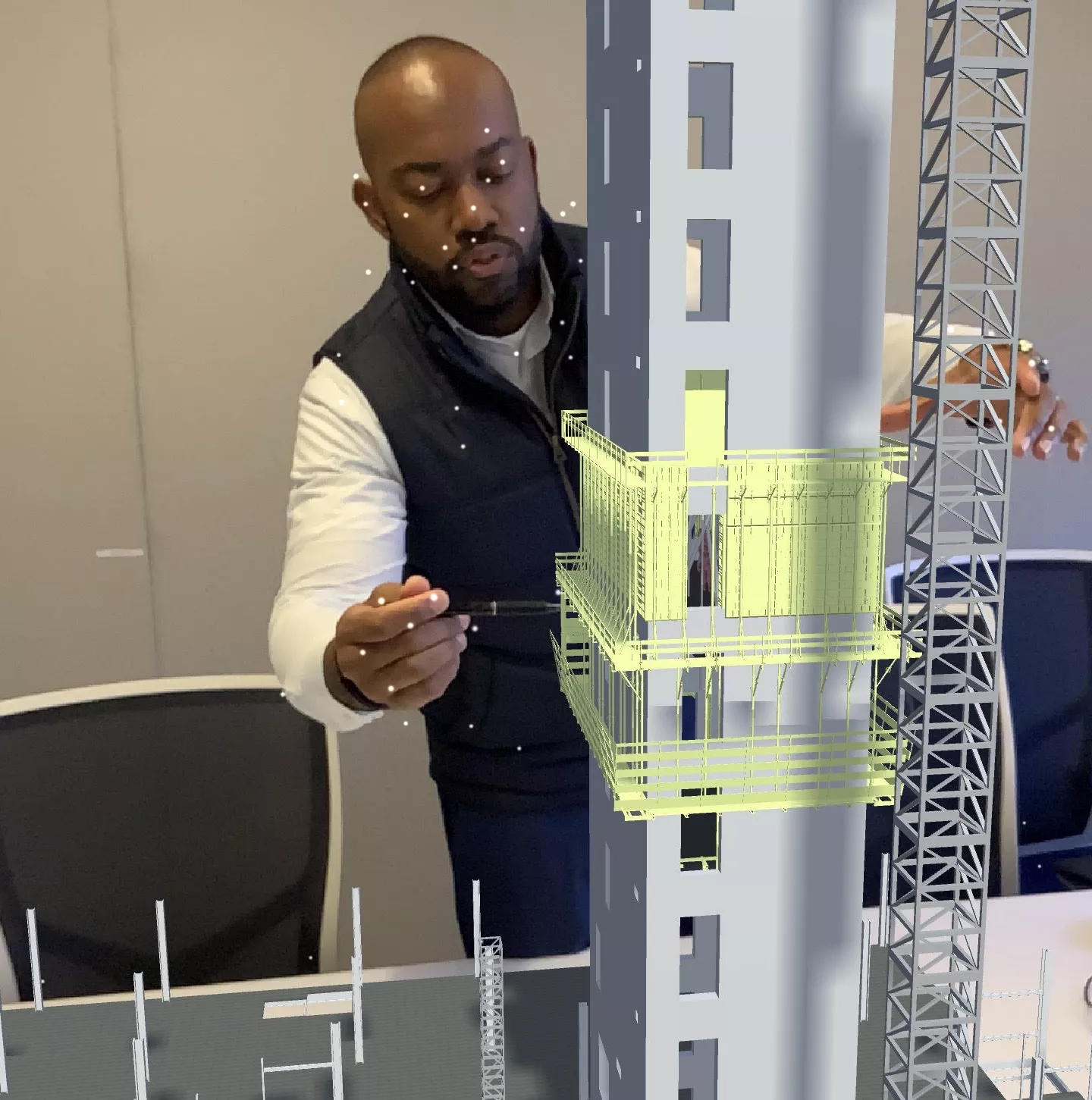Virtual Design Helps Sacramento Courthouse Team Build Faster, Safer
November 21, 2022

Creative problem-solving requires the right tools – and bright minds to apply them. For the New Sacramento Courthouse, the Clark team has been leveraging virtual design and construction (VDC) technologies to save time and money, bolster collaboration, and increase safety throughout the project lifecycle for this 56,600-square-foot, state-of-the-art facility.
The use of augmented reality (AR) offers a prime example of the teams’ innovative approach. Unlike virtual reality, which isolates the user with a headset, AR allowed the team to create a 4-D digital twin of the project model, projected on a table, that everyone could view together. They were able to visualize – and then demonstrate to the Occupational Safety and Health Administration (OSHA), months earlier than usual – how the hoists in the building’s formwork cores would jump over time and maintain safety compliance.
The Clark team’s proactive approach not only saved them invaluable time securing approvals and permits, but also helped establish a new industry standard for safety and compliance. Cal/OSHA, California’s state agency, is planning to rewrite specifications for hoist jumping based on the Clark team’s AR simulation. “We are leveraging technologies in ways that haven’t been done before,” says Ifeanyi Nzewi, a VDC senior manager on the Sacramento Courthouse. “AR offers an elegant way to show how we are maintaining safe distances for our crews and following the correct sequence per OSHA requirements.”
Another first for Clark was using a robot to perform drywall layout on the project. The robot added a layer of safety for the drywall trade contractor by providing wall layout markings for hard-to-reach spaces, edges, and corners.
The Sacramento Courthouse team also has been using drones to detect and troubleshoot complications throughout the project lifecycle. For example, before mobilization to the site, drones helped determine the amount of material needed for excavation, identify drain issues, and offer solutions. The team also plans to deploy drones to perform quality inspections as the curtainwall goes up, which will save considerable time and money.
“By integrating lessons learned with VDC, we continue to optimize our processes,” says Nzewi. “We’re excited by the possibilities of combining new technologies, like AR, with our core VDC services and applying them in innovative ways.”
The new Sacramento Courthouse is scheduled for completion in February 2024.